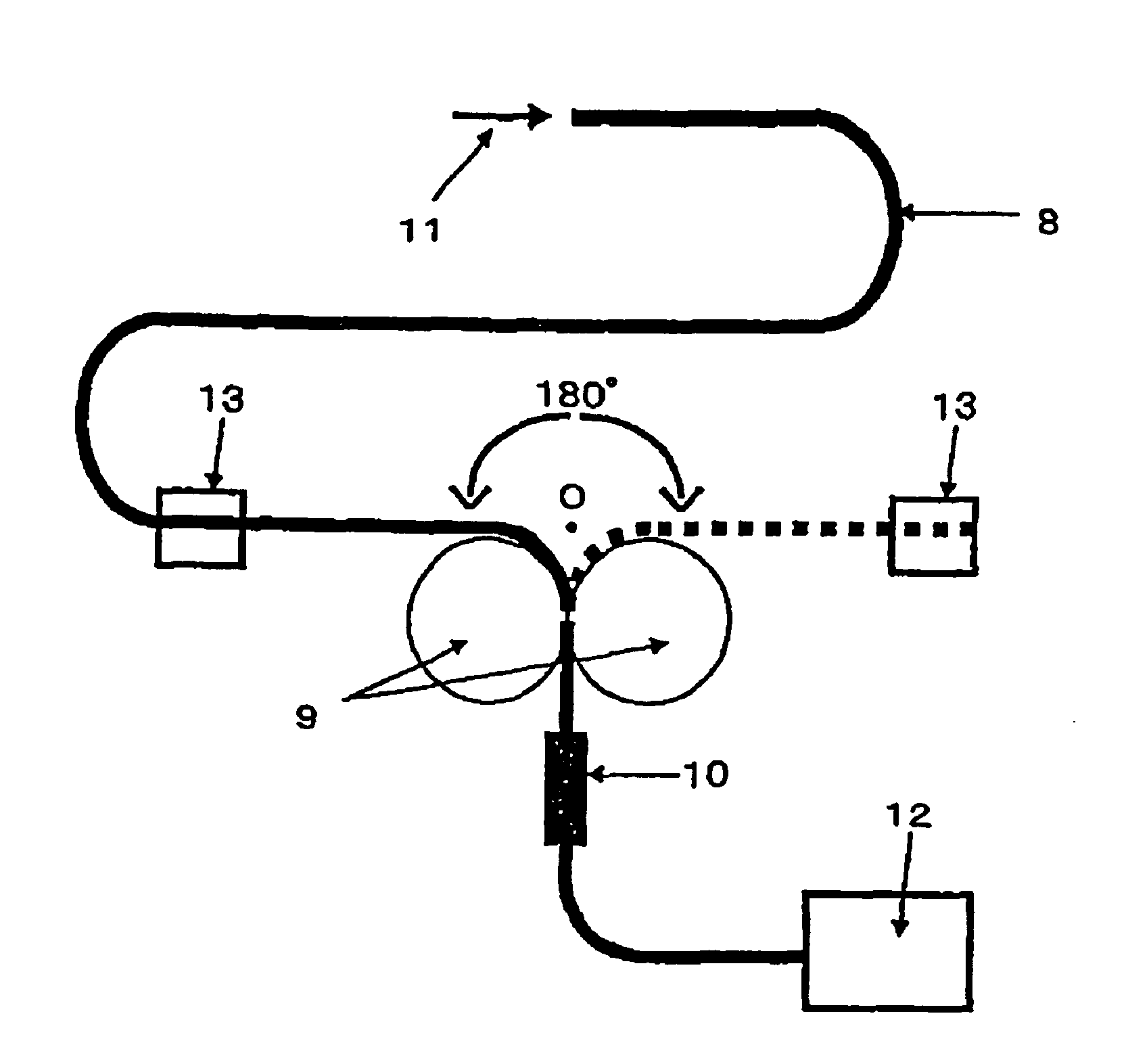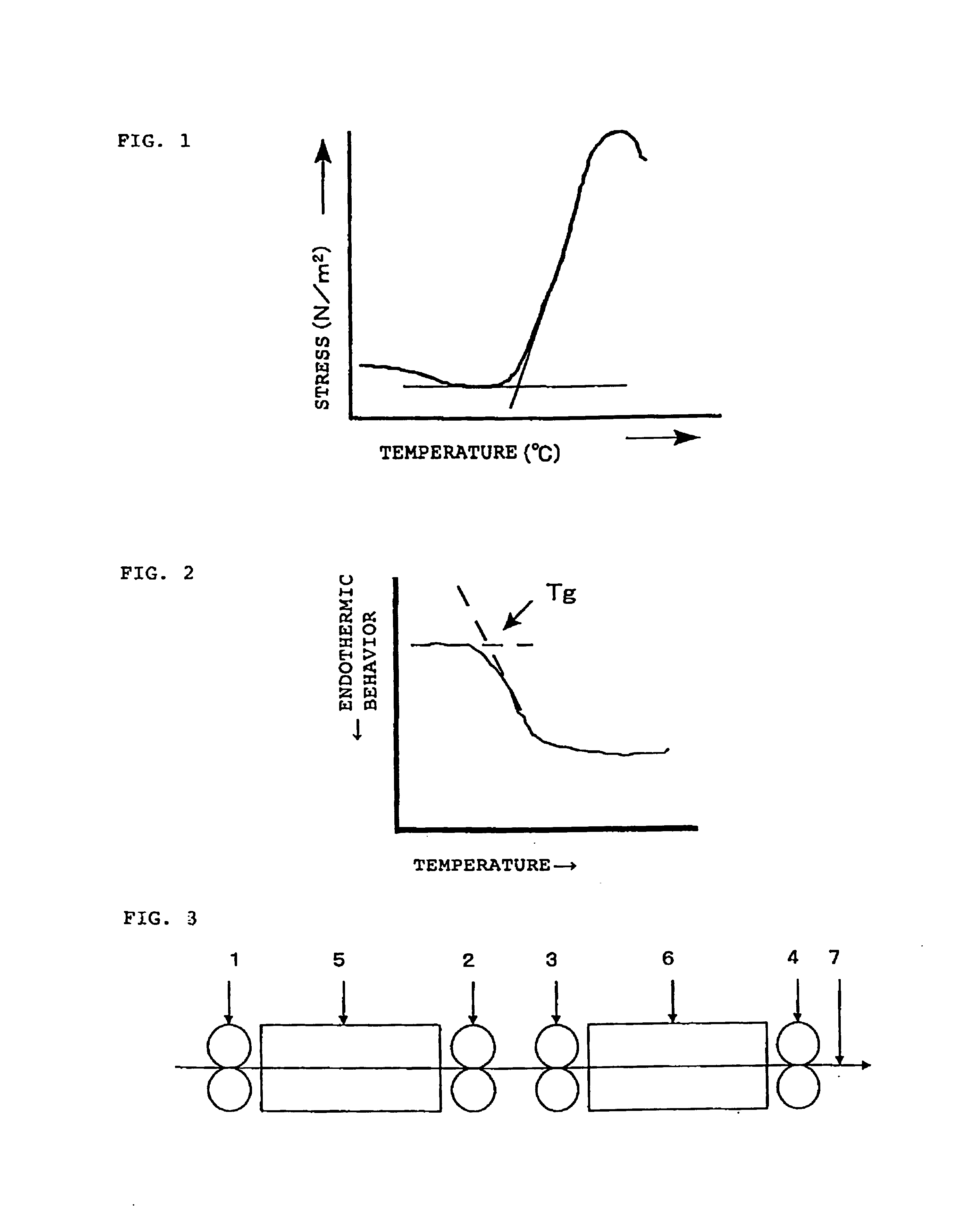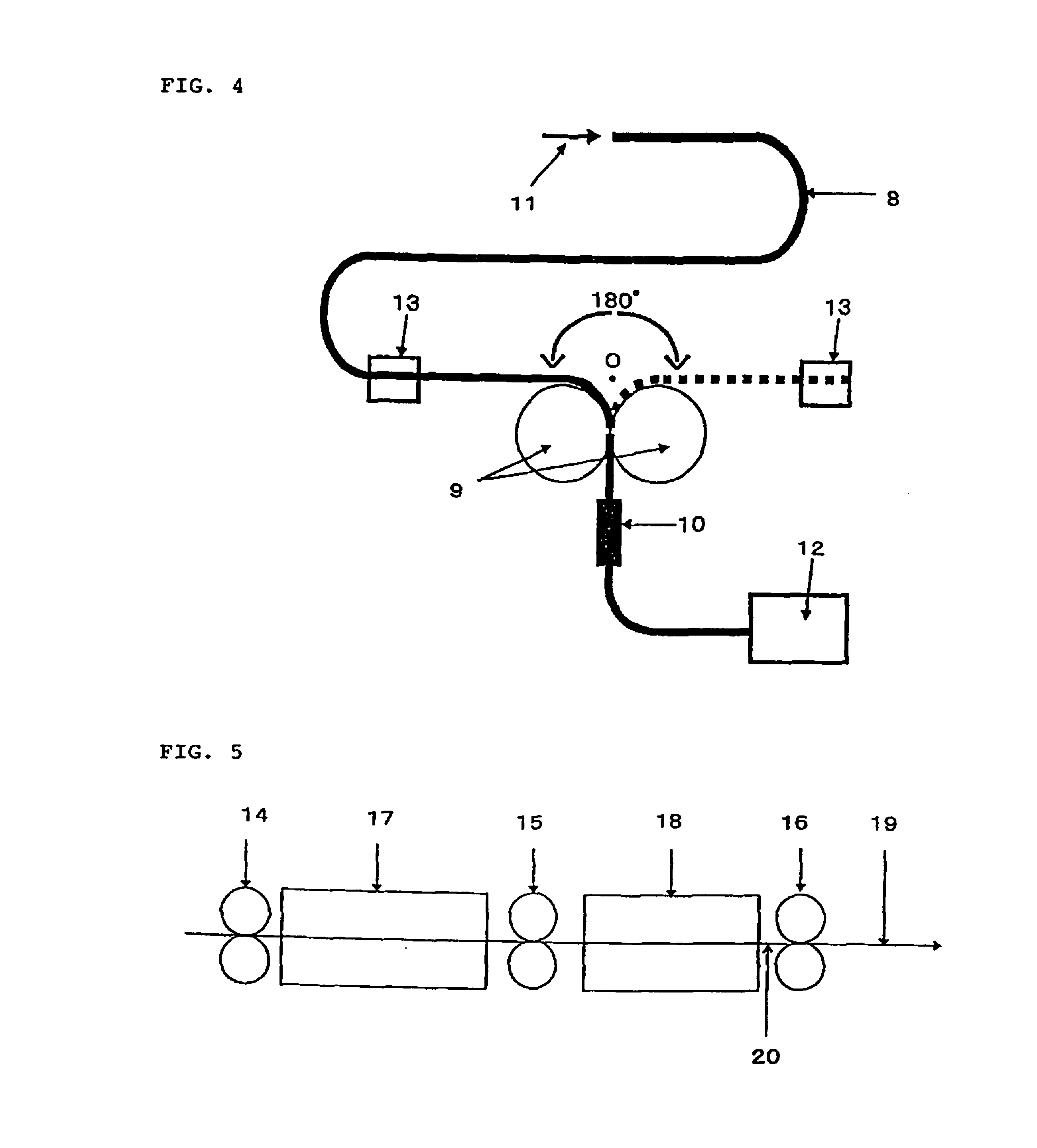Plastic optical fiber, optical fiber cable, plugged optical fiber cable, and production methods thereof
a technology of plastic optical fiber and plugged fiber, which is applied in the direction of cladding optical fiber, instruments, other domestic articles, etc., can solve the problems of poor workability, inability to resist bending stress, and inorganic glass optical fiber is expensive, and achieves excellent heat resistance and small shrinkage ratio
- Summary
- Abstract
- Description
- Claims
- Application Information
AI Technical Summary
Benefits of technology
Problems solved by technology
Method used
Image
Examples
examples 8 to 13
The POF obtained in Comparative Example 6 was heat treated at a temperature of the non-contact heating furnace 6 having a furnace length of 3 m of 165° C., a circumferential velocity ratio (circumferential velocity of the roller 4 / circumferential velocity of the roller 3) of 1.0, and roller circumferential velocities which were adjusted such that an annealing time would be 10 seconds, and the POF was then wound around a bobbin (Example 8). Then, the POF obtained in Example 8 was heat treated under the same conditions as used in Example B (using only the second device shown in FIG. 3), and the resulting POF was wound around a bobbin (Example 9). Thus, annealing of the POF was repeated under the same conditions as used in Example 8 for the numbers of times shown in Table 2 to obtain POFs which undergone the annealing for a different number of times (Examples 10 to 13).
The thermal shrinkage ratios of the obtained POFs are shown in Table 2. As is obvious from Table 2, POFs having smalle...
examples 14 , 15 and 16
Examples 14, 15 and 16
The POF obtained in Example 8 was subjected batch-type fixed-length annealing at 90° C. for 20 hours by using a commercially available hot air dryer in a similar manner (Example 14). Similarly, the POFs obtained in Examples 10 and 13 were subjected the batch-type fixed-length annealing (Examples 15 and 16). The results are shown in Table 3. POFs having further smaller thermal shrinkage ratios and excellent heat resistance could be obtained by the batch-type fixed-length annealing.
TABLE 3ThermalShrinkageRatio (%)RemarksExample 140.5POF of Example 8 was subjected to thefixed-length annealing at 90° C. for 20hours.Example 150.4POF of Example 10 was subjected tothe fixed-length annealing at 90° C. for20 hours.Example 160.3POF of Example 13 was subjected tothe fixed-length annealing at 90° C. for20 hours.
As described above, POFs obtained by the method (second invention) of the present invention, that is, POFs which satisfy the above annealing conditions, have a shri...
examples 17 and 18
Polymethyl methacrylate obtained by continuous bulk polymerization was used as a core. The Tg of the core was 112° C. (DSC method, temperature rising rate: 10° C. / min). A copolymer of 51 parts by weight of 2,2,2-trifluoromethyl methacrylate, 30 parts by weight of 1,1,2,2-tetrahydroperfluorodecyl methacrylate, 18 parts by weight of methyl methacrylate and 1 part by weight of methacrylic acid was used as a sheath. A copolymer of vinylidene fluoride / tetrafluoroethylene=80 / 20 (mol %) was used as a material for a protective layer.
An undrawn POF comprising a core, a sheath and a protective layer was prepared from these polymers by means of a melt spinning method. The obtained undrawn POF was drawn at a roller circumferential velocity ratio (circumferential velocity of the roller 2 / circumferential velocity of the roller 1) of 2.7 by means of the drawing device (first device shown in FIG. 3) comprising the non-contact heating furnace 5 set at 160° C. and having a furnace length of 2.5 m and...
PUM
| Property | Measurement | Unit |
|---|---|---|
| shrinkage ratio | aaaaa | aaaaa |
| shrinkage ratio | aaaaa | aaaaa |
| Tg | aaaaa | aaaaa |
Abstract
Description
Claims
Application Information
 Login to View More
Login to View More - R&D
- Intellectual Property
- Life Sciences
- Materials
- Tech Scout
- Unparalleled Data Quality
- Higher Quality Content
- 60% Fewer Hallucinations
Browse by: Latest US Patents, China's latest patents, Technical Efficacy Thesaurus, Application Domain, Technology Topic, Popular Technical Reports.
© 2025 PatSnap. All rights reserved.Legal|Privacy policy|Modern Slavery Act Transparency Statement|Sitemap|About US| Contact US: help@patsnap.com



